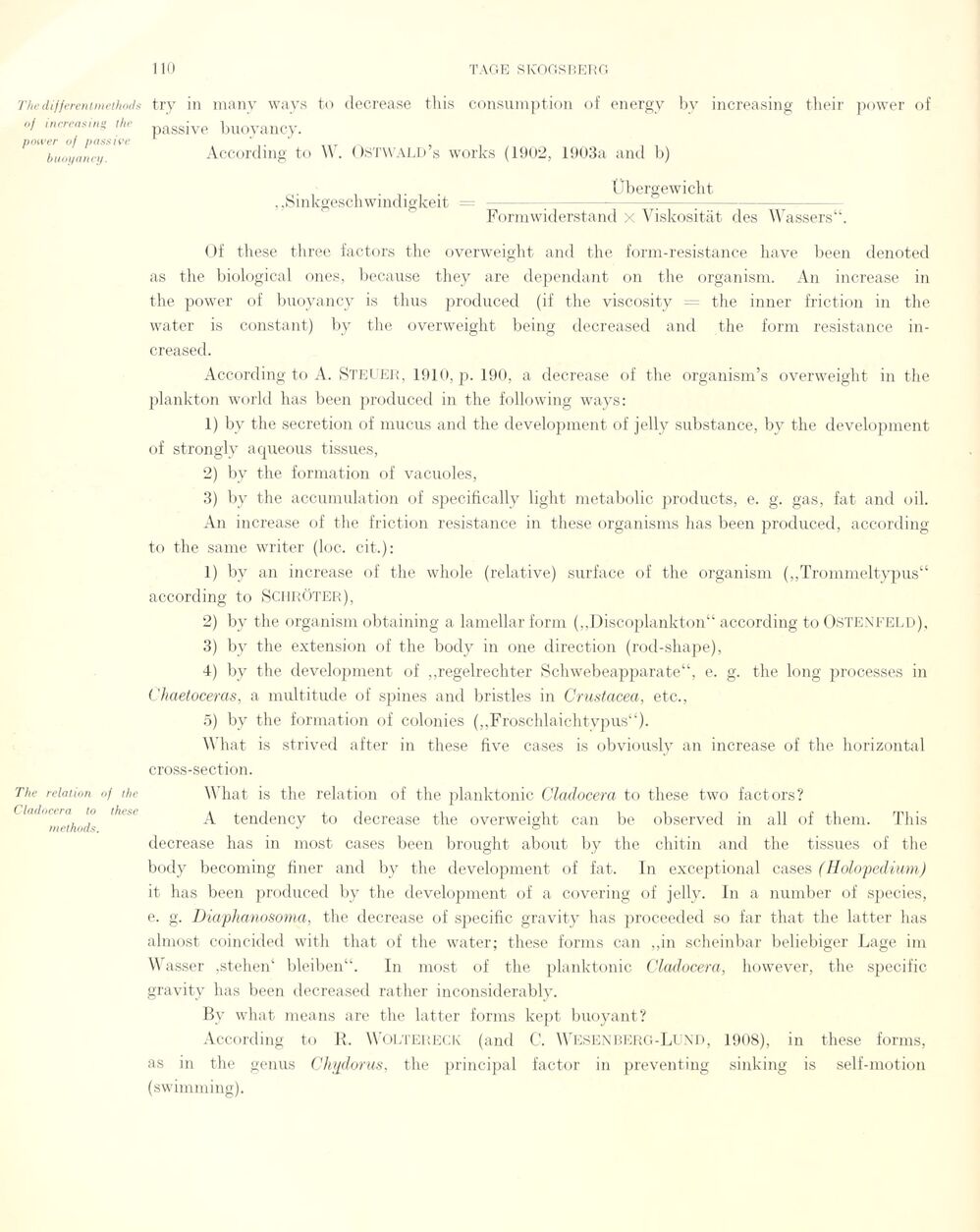
Full resolution (JPEG) - On this page / på denna sida - Sidor ...

<< prev. page << föreg. sida << >> nästa sida >> next page >>
Below is the raw OCR text
from the above scanned image.
Do you see an error? Proofread the page now!
Här nedan syns maskintolkade texten från faksimilbilden ovan.
Ser du något fel? Korrekturläs sidan nu!
This page has never been proofread. / Denna sida har aldrig korrekturlästs.
The differenlmethods
of increasing the
power of passive
buoyancy.
The relation of the
Cladocera to these
methods.
try in many ways to decrease this consumption of energy by increasing their power of
passive buoyancy.
According to W. Ostwald’s works (1902, 1903a and b)
. . Übergewicht
„Sinkgeschwindigkeit = ––––;––––––;–-;–––––-
Form widerstand x Viskosität des Wassers“.
Of these three factors the overweight and the form-resistance have been denoted
as the biologica! ones, because they are dependant on the organism. An increase in
the power of buoyancy is thus produced (if the viscosity = the inner friction in the
water is constant) by the overweight being decreased and the form résistance
in-creased.
According to A. STEUER, 1910,25. 190, a decrease of the organism’s overweight in the
plankton world has been produced in the folio wing ways:
1) by the sécrétion of mucus and the development of jelly substance, by the development
of strongly aqueous tissues,
2) by the formation of vacuoles,
3) by the accumulation of specifically light metabolic products, e. g. gas, fat and oil.
An increase of the friction résistance in these organisms has been produced, according
to the same writer (loc. eit.) :
1) by an increase of the whole (relative) surface of the organism („Trommeltypus“
according to SCHRÖTER),
2) by the organism obtaining a lamellar form („Discoplankton“ according to OSTENFELD),
3) by the extension of the body in one direction (rod-shape),
4) by the development of „regelrechter Schwebeapparate“, e. g. the long pro cesses in
Chaetoceras, a multitude of spines and bristles in Crustacea, etc.,
5) by the formation of colonies („Froschlaichtypus“).
What is strived alter in these live cases is obviously an increase of the horizontal
cross-section.
What is the relation of the planktonic Cladocera to these two factors?
A tendency to decrease the overweight can be observed in all of them. This
decrease has in most cases been brought about by the chitin and the tissues of the
body becoming finer and by the development of fat. In exceptional cases (Holopedium)
it has been produced by the development of a covering of jelly. In a number of species,
e. g. Diaphanosoma, the decrease of s})ecific gravity has proceeded so far that the latter has
almost coincided with that of the water; these forms can „in scheinbar beliebiger Lage im
Wasser ,stehen4 bleiben“. In most of the planktonic Cladocera, however, the specific
gravity has been decreased rather inconsiderably.
By what means are the latter forms kept buoyant?
According to K. WOLTERECK (and C. WESENBERG-LUND, 1908), in these forms,
as in the genus Chydorus, the principal factor in preventing sinking is self-motion
(swimming).
<< prev. page << föreg. sida << >> nästa sida >> next page >>